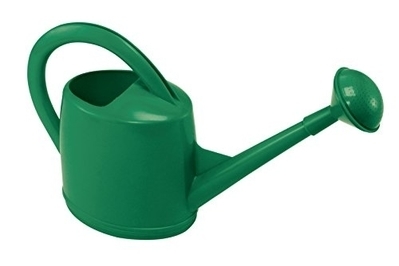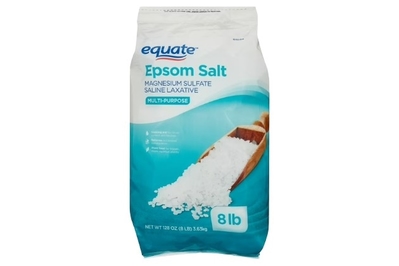Earlier this summer, Jimmy Fallon brought a couple of special guests onto The Tonight Show: a pair of tomatoes that he had grown himself.
One was a variety called Celebrity. The audience voted to name it Demi Tomah-to (over Marisa Tomei-to and Timothée Chalame-to). The other was a Beefmaster. Both were small; before turning Demi into a bit of salsa live on air, Fallon joked that he and his guests “might have to split a chip.”

Size aside, both tomatoes were delicious, according to Helen Mirren and Pierce Brosnan, who tried the salsa, and Chris Pratt, who ate the Beefmaster with basil and garlic on a cracker. (“I’m going to call it a Bruschiscuit,” Fallon announced, creating a melodious combination of bruschetta and Triscuit.)
Still, when Fallon wryly pointed out that the two little fruits (plus a single misshapen cucumber) represented the outlay of close to a hundred dollars on garden equipment — to say nothing of his unpaid time, care, and hope — I think I heard an inward sigh. I’ve let out that sigh myself. The one that says “All that … for this?”
A couple of weeks later, we sat down at our laptops — him on Long Island, me on the Jersey Shore — to video-chat about gardening, tomatoes, and next year’s harvest.
“I respect everything — the tools, having gloves, apron if you want, those squishy things you kneel on if you need that — you know, I respect the whole game,” he told me. “If I’m driving by seeing someone gardening, I’ll give a honk.”
It turns out Fallon has been raising plants since he was a teenager. His parents and grandparents always kept a garden — mostly tomatoes, occasionally zucchini or eggplant — and in our conversation he gave them “props” for his lifelong love of the hobby. But it was a commercial that lit the adolescent fire within.
“There was a thing on TV called the Garden Weasel,” he recalled. (High five if that mention gave you flashbacks, too.) “It was a broomstick with three intertwined prongs, and it would make any garden into a successful garden. So I ordered [one] with my own money, and I was going to save my parents’ garden, because I wasn’t satisfied with what they were getting. I wanted them to get more.”
“It didn’t do anything, by the way,” he went on. “But I spent so much time out there. I would hoe, I would till the ground, I became friends with actual farmers who would come over and throw manure and stuff in my soil, just as a buddy. I was really kind of getting into it.”

The garden thrived under his care, but that didn’t prevent something that will be familiar to anyone who grows their own vegetables: an onslaught of tips on how it could thrive even more. “Everyone had their theories of how to make their vegetables best. Everyone, I couldn’t stop anyone,” he said.
His dad would wrap his tomato plants in aluminum foil before planting them a foot deep in the soil, with only a few leaves showing. “I think it’s his worst idea,” Fallon said, “but he would do it thinking that no underground animal, like a mole or something, could eat the aluminum foil.”
Burying them deep is actually solid advice — it spurs abundant root development — but the foil trick does seem dubious. Moles eat earthworms and insect larvae, anyway, not plants. Fallon’s grandmother, of the old school, “just threw garbage on her tomatoes, like coffee grinds, eggshells.”
That took me back. A decade ago, when I decided to plant tomatoes on my balcony in Queens, New York, I immersed myself in tomato-growing folklore, and eggshells occupied an entire wing of the library. Ditto matchstick heads: You were supposed to throw a handful of them into the hole before you popped the plant in, because tomatoes love sulfur (?), and match heads are sulfurous, so ipso facto, tomato plants like match heads.
In the end, though, I took the more traditional route of expending too much thought on optimizing my soil drainage and not enough on matching my garden desires to my climatic reality. And so $200 of gear, hours of toil, and a dozen heirloom tomato plants painstakingly raised from seed yielded zero delicious tomatoes, because my balcony is a Saharan hellscape in summer. (I didn’t say anything during our conversation, but in that light, Fallon’s two delicious tomatoes for a C-note struck me as a decent return.)
The idea behind our chat was that, as one of Wirecutter’s expert journalists covering gardening and home improvement, I would offer sage advice on making gardens grow. The reality is that I am still learning. With help, I eventually figured out the balcony. Now, I have an entire yard to keep under control before replacing it with native plants — which means I’m Wirecuttering the daylights out of shovels and weeding tools.
“Do you have a certain watering can that’s good?” Fallon asked. “I got a bad one from HomeGoods that — am I even sure if it’s supposed to be a watering can? It might just be a vase.” I recommended he try one of our picks, the Dramm 7 Liter Watering Can. (It’s also a personal favorite: I had owned mine for years before Wirecutter put it in the watering can guide.)
Top pick

My landscaper friend Zack really is an expert, though, and he does just a few simple things to keep his flowers, shrubs, and vegetables dazzlingly healthy. I’ve tapped Zack for help with my work for the NYT real estate section and my own garden, so I passed along some of his gardening ground rules to Fallon.
First, water like clockwork — the same time or times every day, always when the sun is low on the horizon. Give regular, light feedings, rather than big doses once or twice a season, with a simple fertilizer such as fish emulsion.

Fish emulsion is a generic product, although the Alaska brand seems to be the most widespread and is what I keep on hand. It’s a general-purpose fertilizer with a 5-1-1 ratio of the three chief plant nutrients (nitrogen, phosphorous, and potassium, aka NPK). One tablespoon per gallon of water once a week is a good guideline for keeping potted plants happy; once a month is usually fine for garden beds. (“Dude, I’m totally going to do that next year,” Fallon said.)
Add a bit of Epsom salts, aka magnesium sulfate, to the fertilizer once a month. Like eggshells and coffee grounds, it’s an old folk remedy for plants that are looking a little frail, and though plant scientists say its advantages are dubious, a lot of gardeners, including me, swear by it. (There are proven benefits to the addition of magnesium to soils that are deficient in it; the scientific view is that since such soils are not common, adding Epsom salts is often pointless.) Just grab whatever bag of unscented Epsom salts you find at the drugstore and stir in a teaspoon or two of the crystals per gallon of water. (Soon after our interview, Fallon sent over pics of the liquid Epsom salts and fish emulsion he bought to help with next year’s yield.)
Advertisement
Staff pick

Stuff your pots with an abundance of different plants, not just one or two of the same kind. The result looks amazing, and using an assortment lets you select the plants so that something is always blooming and bringing in pollinators. And if one plants fails to thrive, you can just pop a different one in.
Above all, you can’t expect miracles — plants do best in the climates and light conditions they evolved for.

But I did forget to mention one technique specific to tomatoes. Happily, Helen Mirren had it covered. Jimmy, if you’re reading, she is right about tickling your tomato flowers. (Fact: Helen Mirren is never wrong.) They’re self-pollinating, but a little jiggle can help nature along.
Apparently, though, you can just give the whole plant a shake, if you prefer. Or you can even adopt some modern tomato wisdom and make the flowers bounce by blasting music real loud.
Eventually we wandered back to where the conversation began: with the host of The Tonight Show deciding to start growing tomatoes again. Why?
“I have two little kids now,” he said, “and I miss seeing what it’s like — something growing and flowering, and then having a fruit, and the fruit gets ripe, and the whole thing. There’s something beautiful about it, and I want my kids to witness it.”
Leave a Reply